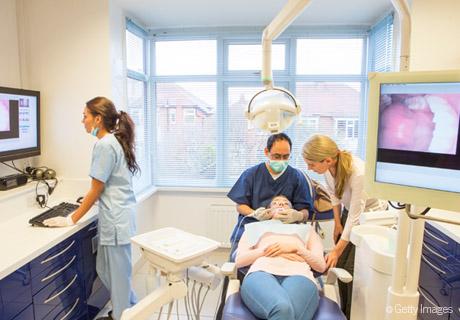Guided surgery: Turning hellish disadvantages into a heavenly process
As part of a new webinar series for the Academy of Osseointegration (AO), “Guided Surgery: Heaven or Hell?”, Dr. Jaime Lozada presents the advantages and disadvantages of guided surgery-and how to minimize some of the common complications associated it.
The Academy of Osseointegration recently hosted a webinar on the advantages and disadvantages of this procedure.

Like most things, guided surgery for implant placement has its advantages and disadvantages.
As part of a new webinar series for the Academy of Osseointegration (AO), “Guided Surgery: Heaven or Hell?”, Dr. Jaime Lozada presents the advantages and disadvantages of guided surgery-and how to minimize some of the common complications associated it.
“It’s an interesting topic discussing the pros and cons, the advantages and disadvantages and the benefits and complications of guided surgery,” Dr. Lozada said.
Guided surgery has a 16-year history, which yielded significant literature in the process. It has many advantages for clinicians, including reducing errors, facilitating accurate implant placement and using time efficiently. For patients, it provides a less painful and invasive option for treatment, as well as simplified prosthodontics rehabilitation. Best of all, implants placed with guides show no difference in survival rate. In this way, the treatment protocol is heavenly.
However, it also demonstrates some common complications according to the presentation by Dr. Lozada. The complications that can occur are where guided surgery gets hellish.
According to the webinar, the disadvantages of guided surgery are:
- Increased treatment time preparation
- Increased occurrence of surgical errors
- Inaccuracies during implant placement
- Increased cost
- More difficult than conventional implant placement
But Dr. Lozada believes with proper training and clinical skills, clinicians can make the most of the advantages of guided surgery and minimize the implications of the disadvantages.
Q&A: Dr. Joseph Gian-Grasso on trends and advances in dental implants
“If we are able to deliver a very strong provisional rate, we are going to minimize the very high complication rate that has been described in the literature,” he said.
Dr. Lozada recommended the following considerations to minimize the disadvantages of guided surgery.
- Consider minor soft tissues reflection to minimize the damage and improve the bone support around the dental implant
- Correct within the guide as needed if you feel the implant isn’t going in the right position (most of the newer guides allow for this type of correction)
- Use preprocessed acrylic monoblock for digital dentures to minimize the complications
- Avoid definitive restorations at placement
- Ensure the provisional restorations provide soft tissue support
Dr. Lozada trains residents and fellows in the latest techniques of oral implant surgery and prosthodontics at Loma Linda School of Dentistry. He is a professor, as well as the director of graduate programs, restorative dentistry and oral implant dentistry there.
Dr. Lozada emphasized that the treatment has merit, and, in the right hands, it can be a great solution for today’s clinician placing implants for their patients.
“It’s not heaven or hell," he said. "It truly is a down to earth tool that we use in implant dentistry. Guides do not replace insufficient level of training. And, of course, we need to use adequate clinical judgment and be well trained with our surgical and prosthodontics skills to execute some of these procedures."
Members of the AO can download the webinar for free. Simply use your member login to the AO website and select the webinar to download to your device. Non-members may access it for a $50 fee. AO is an ADA CERP recognized provider and designates the completion of this webinar activity for one-hour continuing education credit.
Register now for the next AO webinar, titled “Controversies in Assessing Implant Stability – Is Tight Right?”, with Dr. Michael Norton, which will be presented at noon CDT on Sept. 9. For further information, contact Kimberly Scroggs at 847-439-1919 or visit http://www.osseo.org/webinars/future.html.
Ask AO: How can dentists learn more about treating the edentulous maxilla?